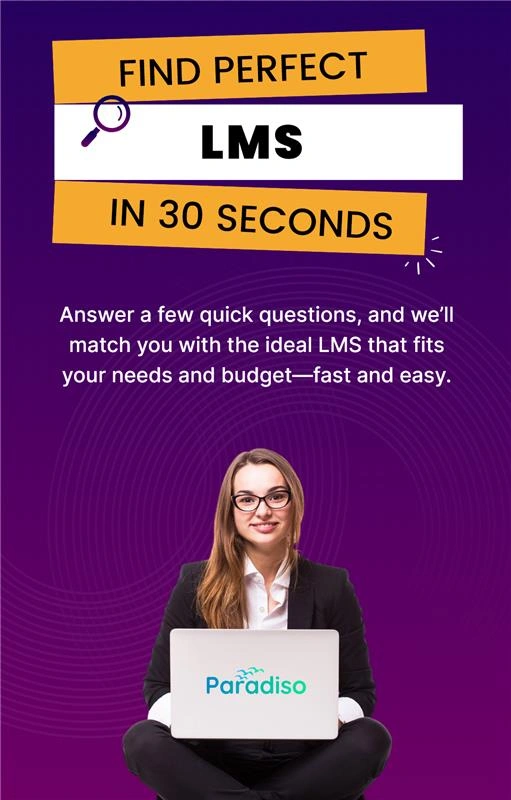Understanding What ‘Completely Free’ Means in LMS Platforms
When evaluating Learning Management Systems (LMS) labeled as “completely free,” it’s important to understand that this term can be misleading without thorough investigation. At first glance, a free LMS seems to offer zero-cost access to core features, making it appealing to educational institutions, training departments, or small businesses looking for affordable solutions. However, a closer look often reveals hidden costs or limitations that can affect scalability and long-term usability.
Defining ‘Completely Free’ in the LMS Context
A truly free LMS should deliver essential functionalities—such as course creation, user management, basic reporting, and content delivery—without any financial commitments or restrictive licensing. These platforms often operate on open-source models or offer free tiers supported by community contributions, enabling deployment and customization without upfront expenses.
Hidden Costs Associated with ‘Free’ LMS
Despite their no-cost marketing, many free LMS solutions incur hidden expenses, including:
- Hosting and Infrastructure: Users often need to provide hosting, which involves server costs, maintenance, and security. For example, deploying open-source LMSs like Moodle on private servers entails ongoing hardware and IT expenses.
- Limited Features and Scalability: Free versions may restrict advanced features like integrations, analytics, or branding. Upgrading to paid plans or customizing solutions can lead to additional costs.
- Support and Maintenance: Free platforms typically lack dedicated customer support, requiring users to invest time and resources into troubleshooting, updates, and security patches, sometimes increasing IT workload.
- Customization and Extensions: Open-source systems offer flexibility, but significant customization often demands technical expertise, which can involve hiring developers or consultants.
- Training and Onboarding: Implementing a new LMS involves training staff and learners, representing additional time and resource investments.
Making Informed Decisions
To determine if a free LMS suits your organization, consider not just the initial cost but the total cost of ownership over time. Evaluate scalability, support options, available features, and long-term sustainability. A comprehensive assessment ensures your choice aligns with organizational goals and budget limits.
All-in-One Free LMS
for Organizations Across Industries
Say goodbye to trials and unreliable open-source solutions. Unlock the full potential of your team with Paradiso’s free LMS – the easiest way to streamline learning and development.
Key Features and Limitations of a Truly Free LMS
When exploring free Learning Management Systems, understanding their core features and potential restrictions is essential. A genuinely free LMS offers fundamental functionalities necessary for effective online learning, making it ideal for small organizations, educational institutions, or startups with limited budgets.
Core Features of a Free LMS
- User Management and Access Control: Create and manage user profiles, assign roles (students, instructors, admins), and regulate access without user limits.
- Course Creation and Content Management: Develop, upload, and organize content like videos, PDFs, quizzes, and assignments, supporting dynamic learning experiences.
- Communication and Collaboration Tools: Facilitate interaction through forums, messaging, or discussion boards, enhancing engagement and social learning.
- Tracking and Reporting: Basic analytics such as progress tracking, completion certificates, and assessment scores help monitor learner performance and course effectiveness.
Limitations and Potential Additional Costs
Despite their benefits, free LMS platforms often impose restrictions or charge for advanced features:
- Usage Limits: Restrictions on active users or courses, such as support for only 50 users or 5 courses, which may require upgrades as you grow.
- Storage and Bandwidth: Limited storage for multimedia content; extra storage incurs additional costs.
- Customization and Branding: Minimal branding options in free versions; advanced customization might need paid plans.
- Third-Party Integrations: Limited or no access to integrations like CRM or mobile apps unless paid features are utilized.
- Support and Maintenance: Often relies on community support, with limited or no dedicated assistance, increasing troubleshooting time.
Understanding Hidden Costs in Technology Investments
When organizations plan for system upgrades or new technology implementations, initial purchase prices are often the focus. Yet, many overlook ongoing expenses that can significantly inflate total costs. Recognizing these hidden costs—such as software upgrades, support, customization, and storage—ensures better budgeting and sustainable investments.
Software Upgrades and Licensing Fees
Software systems, especially enterprise solutions, often require regular upgrades for security and functionality. While initial licensing might seem straightforward, ongoing costs for major upgrades or migrations can quickly escalate. Enterprise solutions like SAP or Oracle frequently charge annual maintenance fees covering enhancements, patches, and new features. Licensing costs per user or module also increase expenses as your organization expands.
Support and Maintenance Expenses
Continuous support is vital for system stability, but it’s often underestimated. Support contracts, critical issue resolutions, and dedicated account managers typically incur annual or monthly fees. Industry data suggests that support costs may comprise 10-20% of total ownership costs over the system’s lifecycle, emphasizing their importance for minimizing downtime and quick problem resolution.
Customization and Integration Costs
Tailoring solutions to your specific needs often involves hiring developers or consultants, adding to long-term costs. Custom features or system integrations improve workflow but require ongoing maintenance and potential rework during upgrades.
Storage and Data Management Fees
As data volume grows, storage charges increase. Cloud providers like AWS or Azure bill based on data size and retrieval frequency. Additionally, backup and disaster recovery add to operational costs, which organizations should plan for in advance.
Strategies to Avoid Surprising Expenses
To prevent unforeseen costs, organizations should request detailed quotes that specify future upgrade or support fees. Negotiating flexible contracts and evaluating total cost of ownership helps in planning for growth and avoiding budget overruns.
By understanding these hidden expenses, organizations can allocate resources wisely, maintain budget control, and achieve cost-effective technology implementations—such as scalable LMS solutions like Paradiso LMS that promote transparency and long-term value.
Analyzing Popular Free LMS Platforms: Features, Advantages, Disadvantages, and Hidden Costs
Free LMS platforms are increasingly popular among organizations seeking low-cost e-learning solutions. While they often promise zero licensing fees, many come with limitations and potential hidden expenses. Here, we review some prominent free LMS options—detailing their features, strengths, drawbacks, and whether they are truly cost-free.
Overview of Popular Free LMS Platforms
Notable free LMS platforms include Paradiso Free LMS, Moodle, Google Classroom, TalentLMS (free tier), Canvas, and Schoology. These cater to different needs—from simple course management to comprehensive training systems—making them versatile choices for small businesses, schools, and nonprofits.
Common Features Offered
Typical free LMS features encompass:
- Course creation and management
- User registration and role assignment
- Content hosting (videos, PDFs, quizzes)
- Basic assessment tools
- Communication channels (forums, messaging)
- Progress tracking and reporting
Advantages of Free LMS Solutions
The main benefit is cost savings, enabling organizations to:
- Start e-learning initiatives without licensing fees
- Test and refine remote training programs
- Access fundamental learning features
- Leverage active open-source communities for support
- Deploy rapidly with minimal infrastructure
These benefits are especially valuable for resource-constrained entities aiming to experiment with online learning.
Disadvantages and Challenges
Nonetheless, free LMS platforms have limitations:
- Scalability restrictions, such as user caps or feature limits
- Technical complexity requiring hosting and maintenance expertise
- Lack of dedicated support, relying on community forums
- Limited customization and branding options
- Potential security vulnerabilities if not properly managed
Hidden Costs and Limitations
While marketed as free, organizations should account for:
- Hosting infrastructure and ongoing hardware or cloud expenses
- Technical staff time for setup, updates, and troubleshooting
- Additional modules or plugins for advanced capabilities
- Scaling costs when user numbers grow
- Possible premium features or services if requirements exceed free offerings
Most free LMS platforms, despite their zero licensing fee, are not entirely cost-free in practice. The real expenses stem from infrastructure, technical support, and scaling needs. Carefully evaluating long-term requirements helps determine if a free solution remains cost-effective as your organization evolves.
All-in-One Free LMS
for Organizations Across Industries
Say goodbye to trials and unreliable open-source solutions. Unlock the full potential of your team with Paradiso’s free LMS – the easiest way to streamline learning and development.
Why Choose Paradiso Free LMS for Transparent and Cost-Effective Learning Solutions
In today’s competitive environment, organizations need a training platform that is not only powerful but also transparent and budget-friendly. Paradiso Free LMS delivers on all these fronts—offering an engaging, feature-rich learning experience without any subscription fees, hidden costs, or limitations.
100% Free with Clear Features
Paradiso Free LMS provides complete transparency—what you see is what you get. The platform includes SCORM compliance, mobile learning, social learning features, and detailed analytics—all accessible without any surprise charges. You know exactly what’s included, empowering you to focus on training rather than worrying about budgets.
Cost-Free Yet Scalable
While the Free LMS comes at no cost, it is built to grow with your needs. Its scalable architecture ensures that whether you’re training 10 or 10,000 learners, you can seamlessly expand without investing in additional tools—helping reduce complexity and overall management effort.
Reliable Performance and Dedicated Support
Even as a free solution, Paradiso LMS offers dependable performance, regular updates, and responsive support. Its commitment to clear communication and future upgrades ensures your learning environment stays modern and effective.
Driving Learning Efficiency
By choosing Paradiso Free LMS, you’re selecting a transparent, dependable, and flexible platform designed to serve diverse training needs—from corporate environments to educational institutions—without any financial burden. It’s your gateway to delivering impactful eLearning while keeping costs at zero.
Conclusion: Key Insights and Actionable Tips for Choosing an Authentic Free LMS
Choosing the right free LMS is vital for delivering quality eLearning without unnecessary costs or risks. As explored, authenticity and transparency are crucial to ensure your organization’s data security and learner engagement.
Key Insights:
- Prioritize Credibility: Select providers with proven track records and positive reviews.
- Assess Features and Flexibility: Ensure the platform supports your training needs and customization requirements.
- Verify Data Security and Privacy: Confirm the provider’s commitment to protecting user data and compliance with regulations like GDPR.
- Focus on User Experience: Choose intuitive interfaces for ease of use by administrators and learners.
- Understand Limitations: Recognize restrictions of free versions and plan for future growth accordingly.
Actionable Tips:
- Research providers thoroughly, prioritizing transparency and reputation.
- Request demos or trial access to evaluate usability and features.
- Review terms of service and privacy policies carefully.
- Compare industry reviews and benchmarks objectively.
- Choose scalable solutions like Paradiso LMS for future growth and security.
By applying these insights, organizations can confidently select an authentic free LMS that aligns with their goals, ensuring a secure, engaging, and effective learning environment.

















